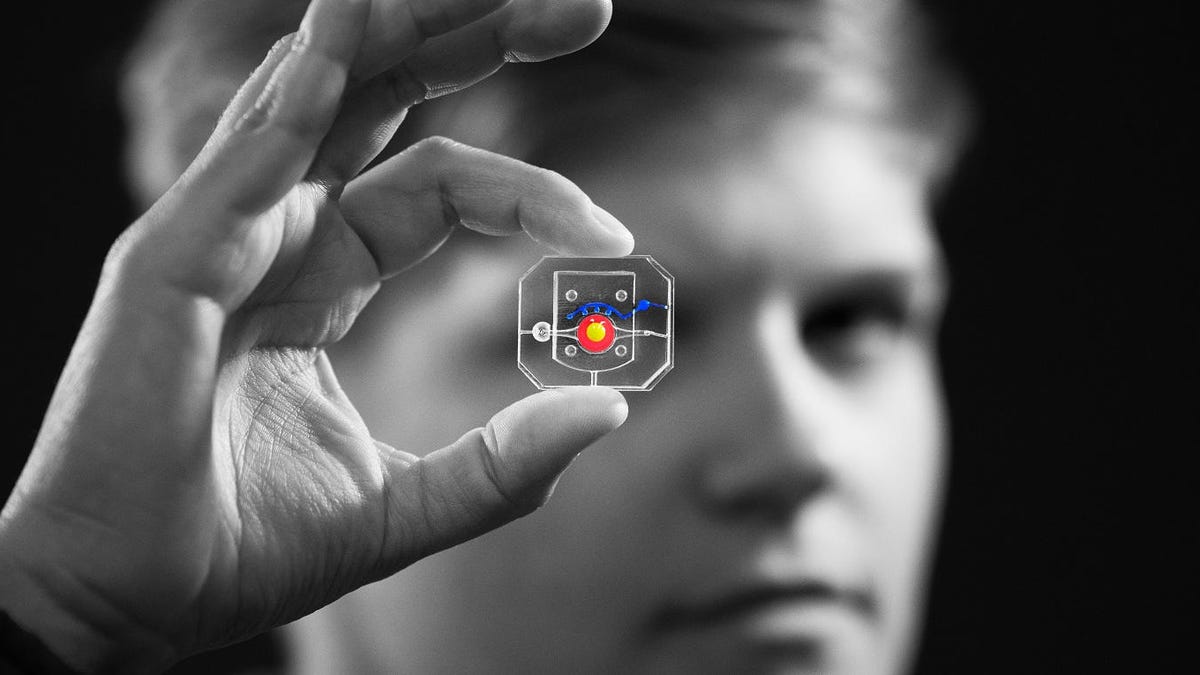Scientists engineer a blinking human eye replica on a dime-sized chip
An eye for a 3D-printed eye.

Hasta la vista, baby.
The human eye is so hugely complex Charles Darwin, father of evolution, once remarked it was "absurd in the highest degree" that it could arise through natural selection. Its complexity has made it difficult to replicate and model, meaning scientists have to test cells of the eye in a petri dish or using animal models. Now, researchers from the University of Pennsylvania have created an artificial human eye on a chip, which could change the way our eyes are studied.
The model eye, described in the journal Nature Medicine on Monday and the result of a collaboration between ophthalmologists and bioengineers, is built on a transparent, octagon-shaped chip about the size of a dime. In the center is a contact lens-shaped scaffold that contains cells from the layer at the front of the eye (the cornea) and cells from the conjunctiva, which together form the surface of the eye. The "eyelid" in this case is a rectangle of gelatin that slides over the scaffold to mimic blinking and small channels above the eye provide a way to generate tears.
You've probably already blinked a few times just reading this post. The subconscious effort helps to keep your eyes hydrated so they don't dry out, creating a thin film across the surface of your eye. Dan Huh, lead author on the study and associate professor at the University of Pennsylvania, is particularly focused on creating organs-on-chips and organoids, previously creating placental chips and lung chips that are currently being tested on the International Space Station.
Huh said that blinking was exactly the feature his team wanted to replicate in their replica eye model.
In the blink of an eye.
"From an engineering standpoint, we found it interesting to think about the possibility of mimicking the dynamic environment of a blinking human eye," Huh said. Successfully mimicking that film also allowed them to model a condition known as dry-eye disease (DED), which can result in itching and inflammation because of a lack of hydration.
To induce the disease on their chip, the research team slowed the artificial blinking down from 12 times per minute to just six times per minute, noting this significantly reduced tear volume. The team then tested an investigational drug and found it reduced some of the inflammation usually seen with DED.
They note that the mechanisms behind this action are not fully understood, but may be due to enhanced lubrication or by stopping particular molecules from kicking off the inflammation process.
The scaled-back model of the eye doesn't include the full complement of cells in the human eye -- it's lacking blood vessels and nerves, plus a swath of the immune cells usually present in the eye. In diseases like dry-eye, the immune response plays a key role in how the disease manifests. And there are other limitations the researchers point out, such as an inability to accurately mimic tear production or how the eye might interact with physiological systems present in a living, breathing human.
"I hope our eye-on-a-chip platform is further advanced and used for a variety of applications besides drug screening, such as testing of contact lenses and eye surgeries in the future," said graduate student Jeongyun Seo, a co-author on the study.

